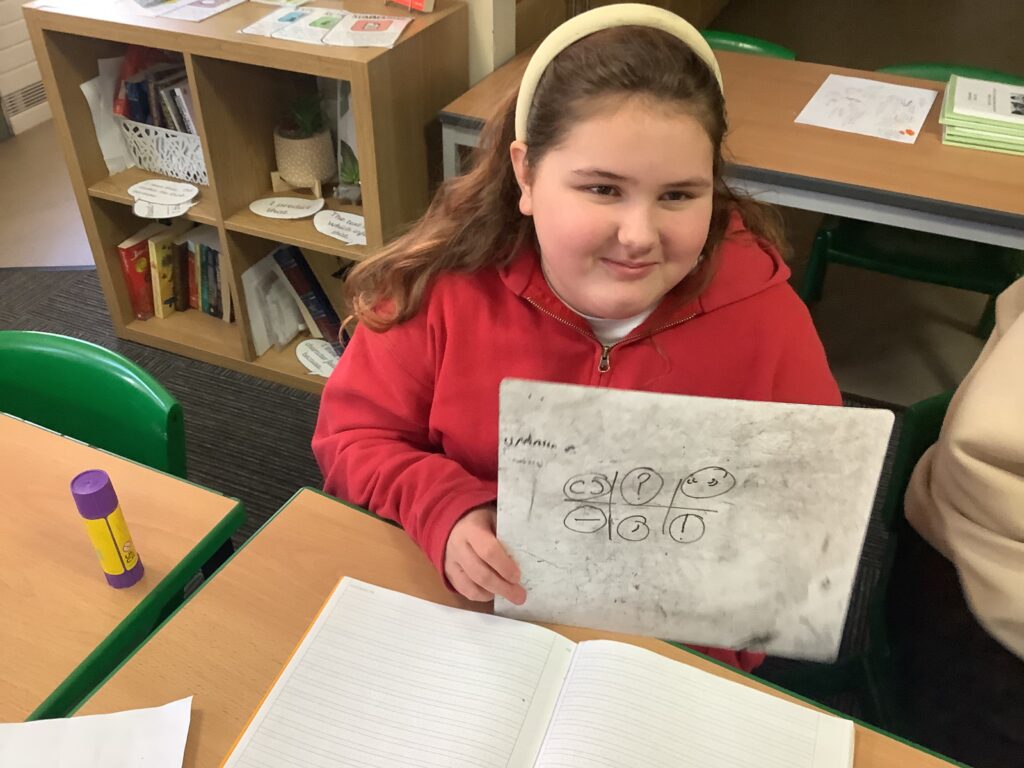







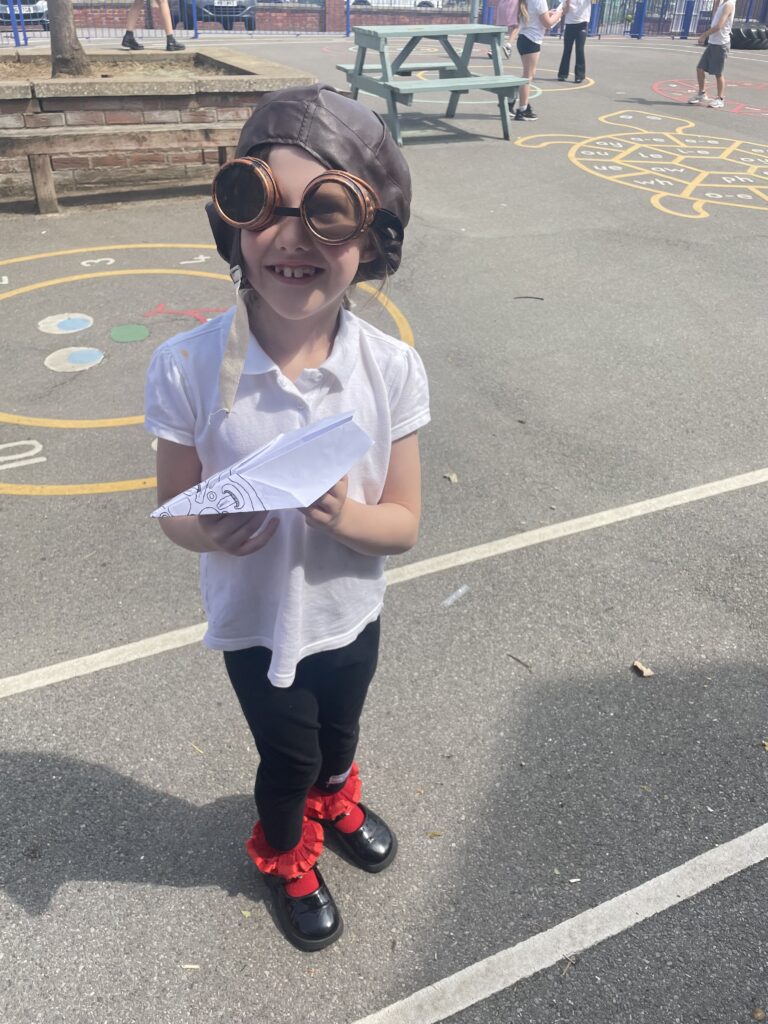
Crew Marsh have had a wonderful experience lesson making their own paper aeroplanes and then using the hat and goggles to feel what it would be like to fly around our playground.









Crew Marsh have had a wonderful experience lesson making their own paper aeroplanes and then using the hat and goggles to feel what it would be like to fly around our playground.
In our experience day, we had the chance to explore the story that we’ll be using as a stimulus to help us write. Due to the story being a picture book, we had to make inferences about what we thought was happening based on the images. We then used some of the pictures to complete a silent conversation which allowed us to shared our notices, feelings and actions we could see in the images.



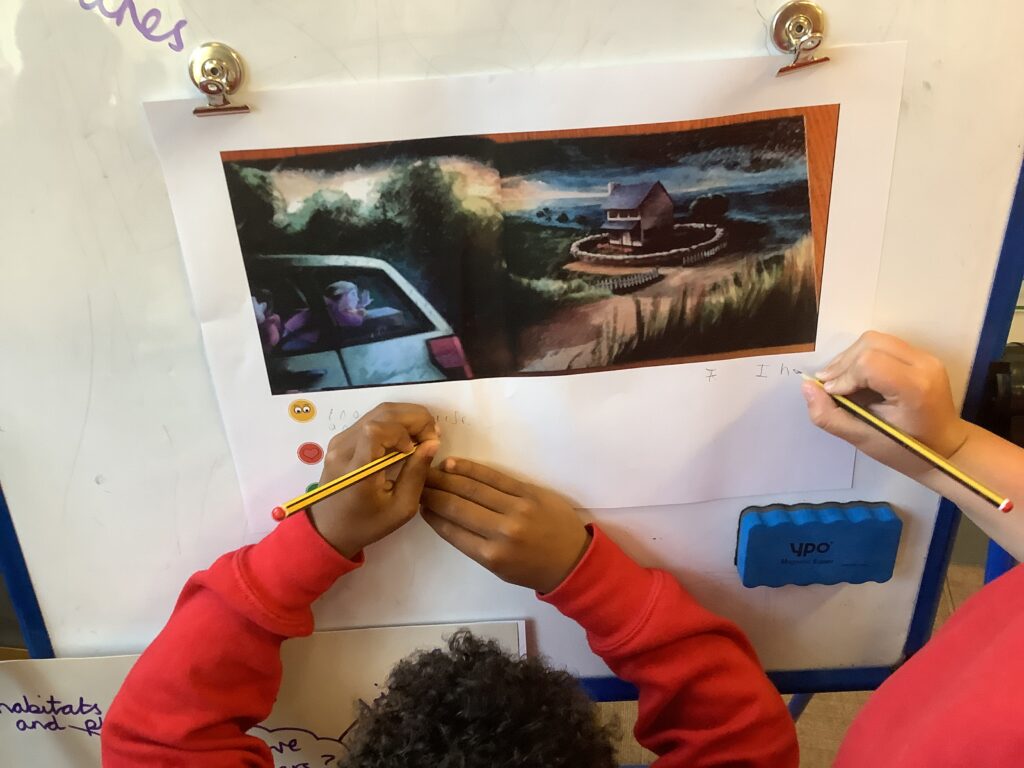

Today, Crew Hamill had their second experience lesson in which they were identifying the features of a non-chronological report. We worked as a crew to look at an example report, sharing ideas about what we noticed – the title, paragraphs and pictures etc. We then looked at a ‘non-chronological report checklist’ and used this to identify further features such as subheadings and an introduction. Once we were comfortable that we understood the features, we worked in pairs to organise a non-chronological report that had been jumbled up. We had to work out which subheading matched which paragraph, identify the title, introduction and conclusion, and then figure out which order we would put the information in before deciding where the pictures would go. Once we had done this, we labelled each of the features and explained why they were important. To consolidate our learning, we played ‘checklist challenge’ in which we had 3 minutes to write down as many features as we could remember before seeing who had remembered the most!

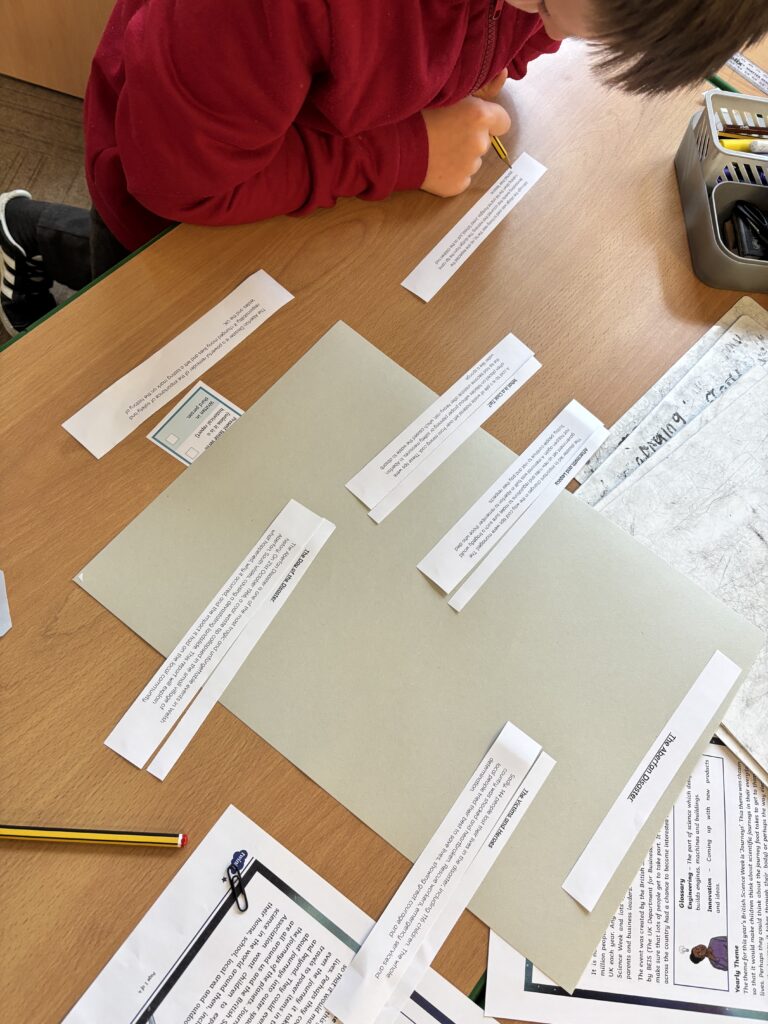

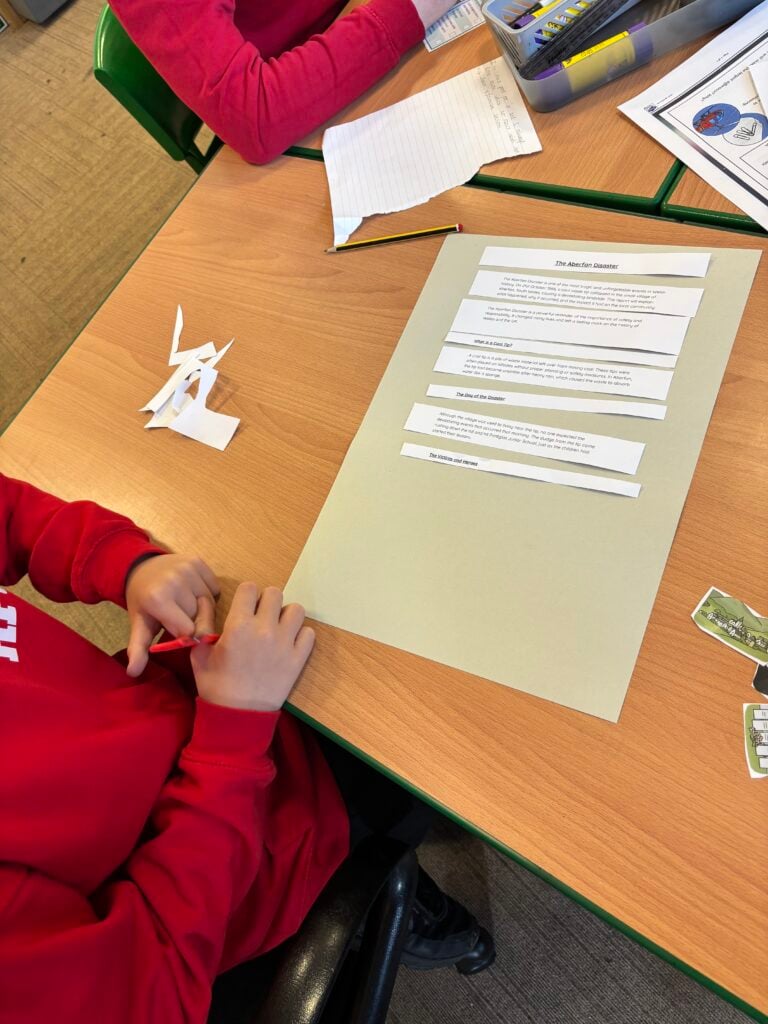


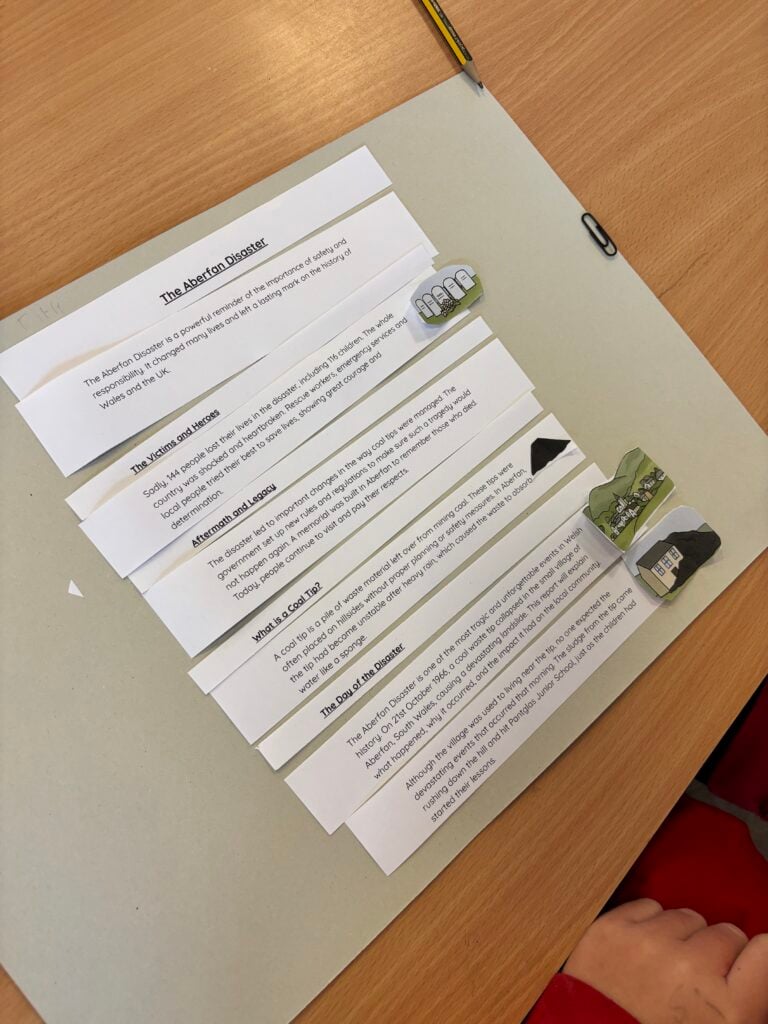







Today in writing, we have continued to build our knowledge about tectonic plates in preparation for when we write our next plot point. We watched some videos and chotted down loads of facts to support us in writing.
We then did a shared write which allowed Miss Shields to model how to put the facts into sentences.
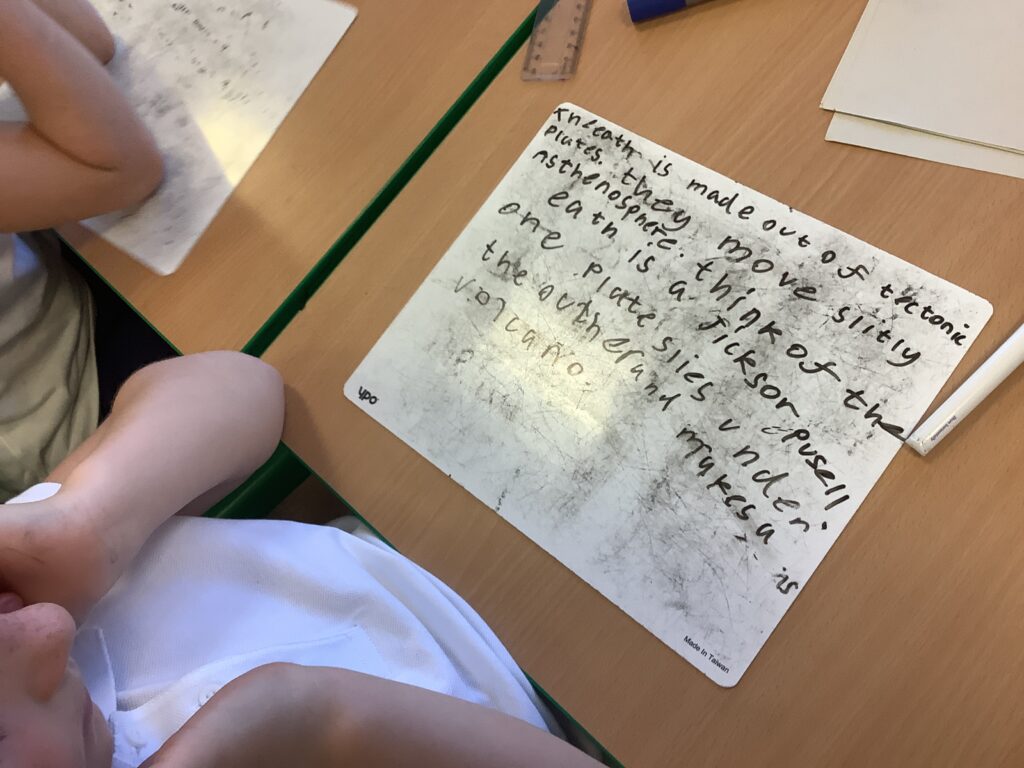

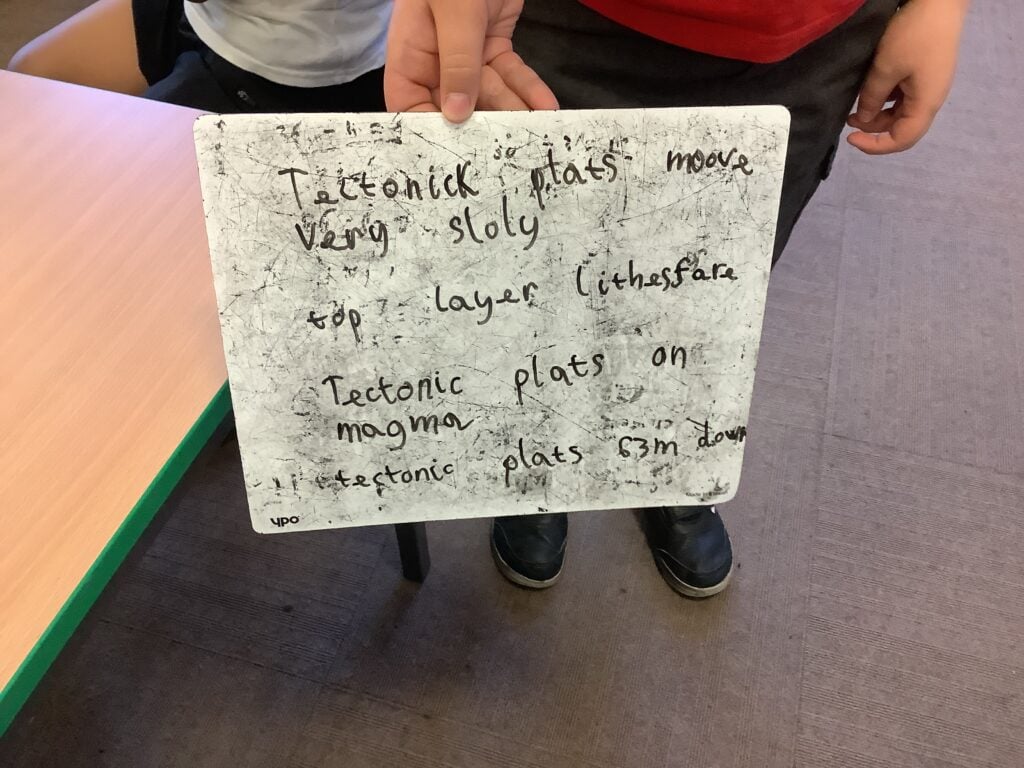

In writing, it was a perfect opportunity to complete a recount after our visit to Magna. To help us prepare for the writing day, we spent some time ordering the events in chronological order. While the children completed the activity, I could hear the children starting to use time adverbials as they ordering them which will be one of our focus areas for writing.


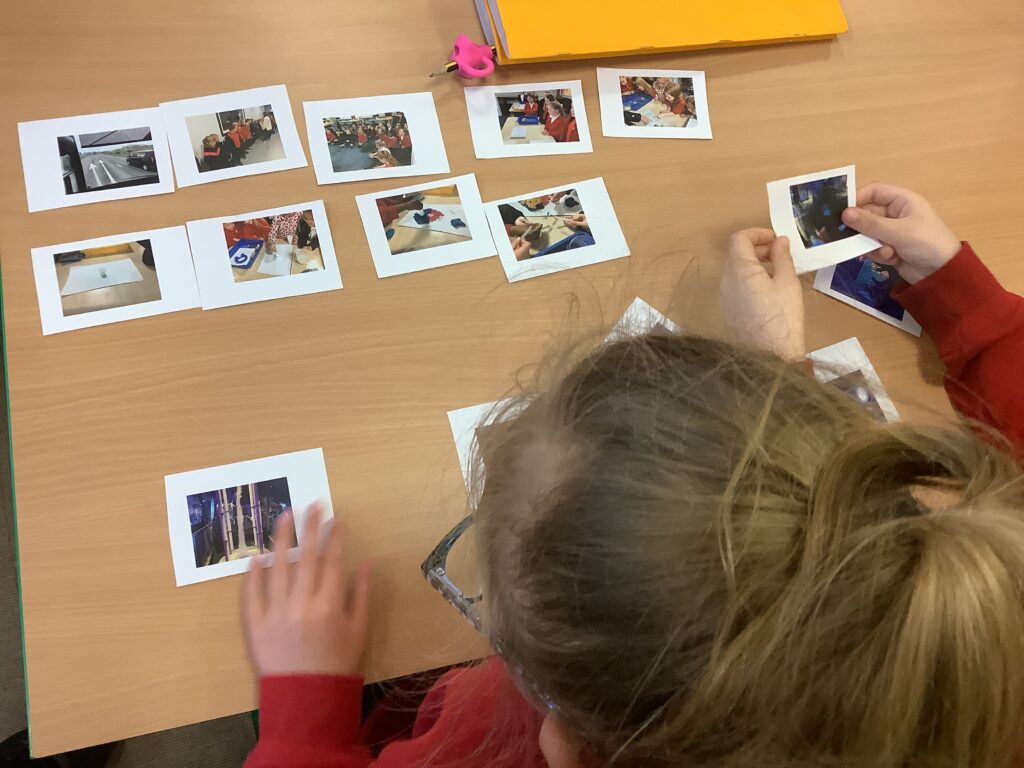
Once we were happy the events were in order, we used our fronted adverbials word mats to start thinking about the ones that would be most appropriate for our writing. We then shared these back and created a bank of fronted adverbials that could be used when we write our recount.

To kick start our new writing unit on poetry, Crew Hamill have looked at lots of different examples of poetry, including a video of poet Micheal Rosen reciting his famous poem ‘Chocolate Cake’ (this made us all laugh a lot!) and a video of some Roald Dahl poems that have been turned into songs. We then worked in pairs to identify as many different features of poetry as we could, include rhyme, rhythm, line breaks, stanzas and personification.

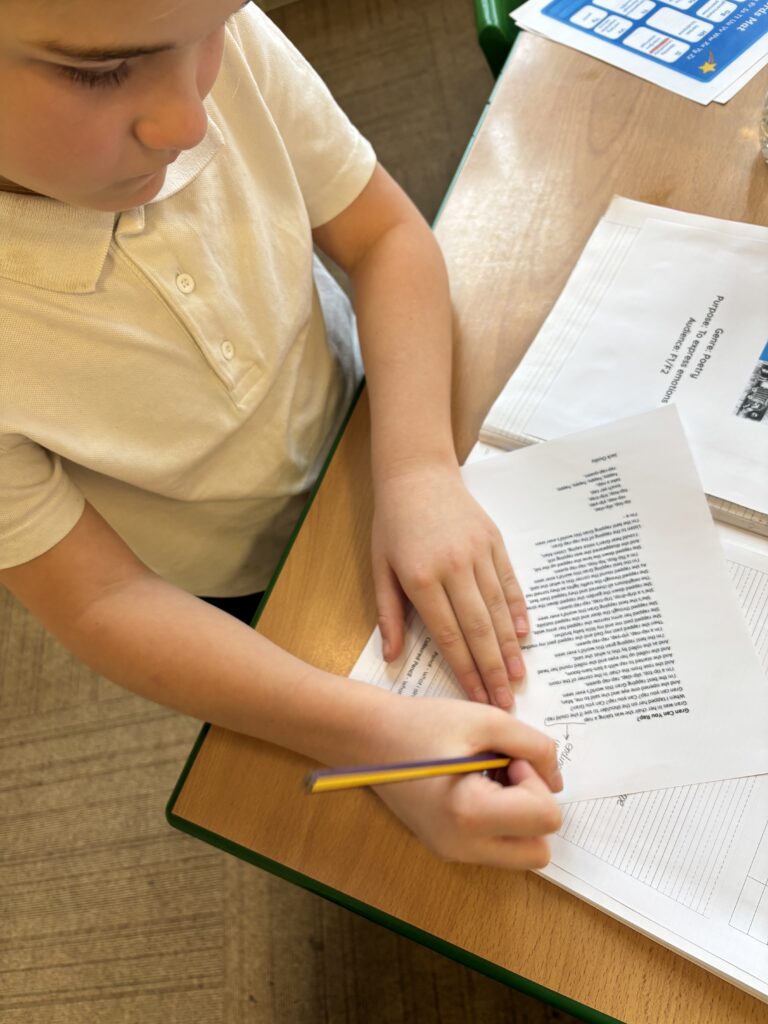




Crew Hamill have worked extremely hard over the last few days to complete their independent write. We began with a recap of our grammar, ensuring we can still label the verb, subject and everything else in our sentences to ensure they are punctuated correctly. We then used a stimulus of a short film, Francis to create a descriptive piece of writing. We have chotted ideas together as a crew in order to complete a setting description of where Francis is as well as a character description of Francis herself. We have then used the resources available to us – word banks, chotting sheets and pictures – to write our descriptions.


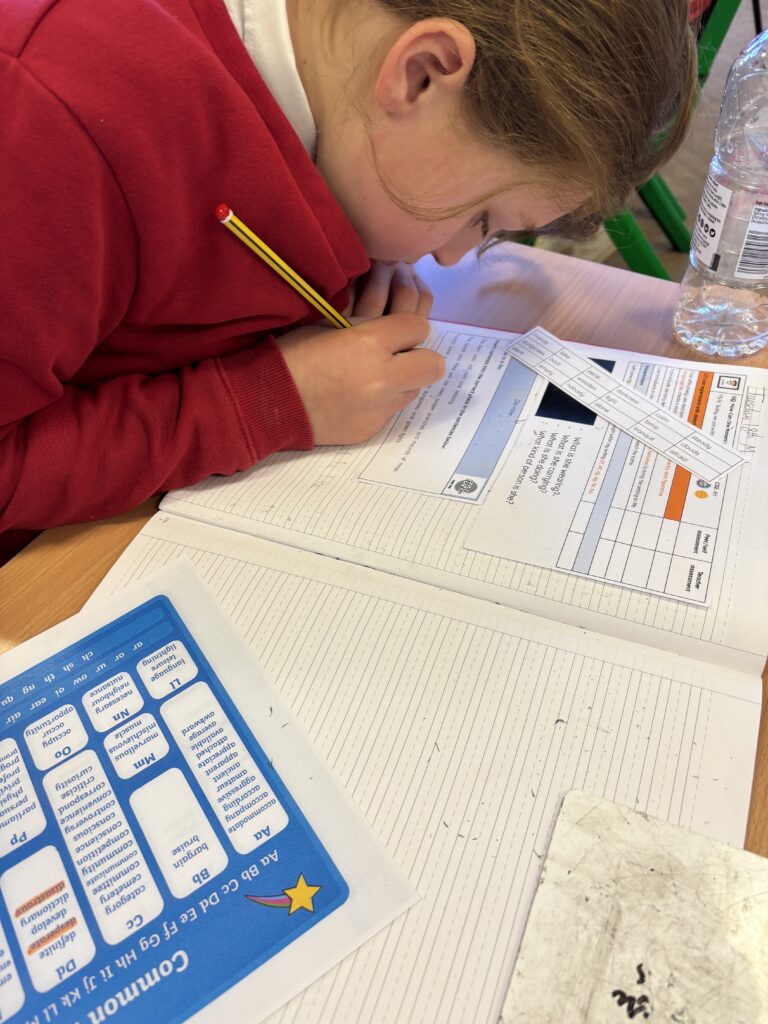


The children have been working super hard on their writing skills. Now in a morning they write their names, numbers to 10, and now affirmation sentences. They have been amazing at recalling the properties of a sentence such as adding a full stop at the end. Well done crew F2.
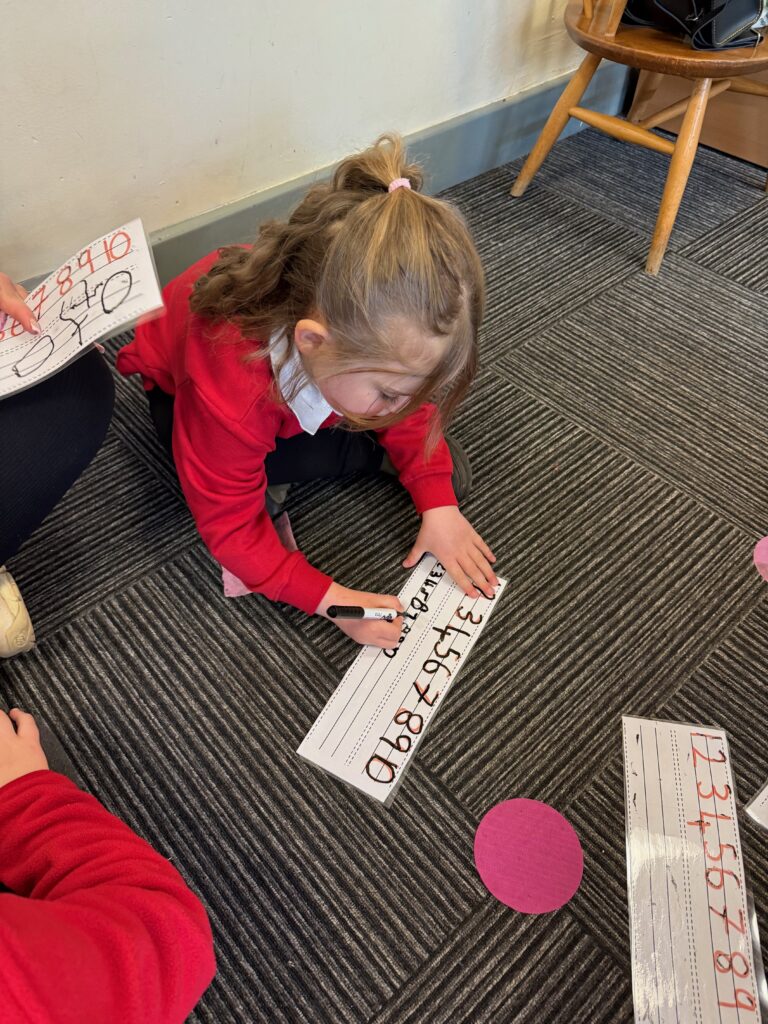
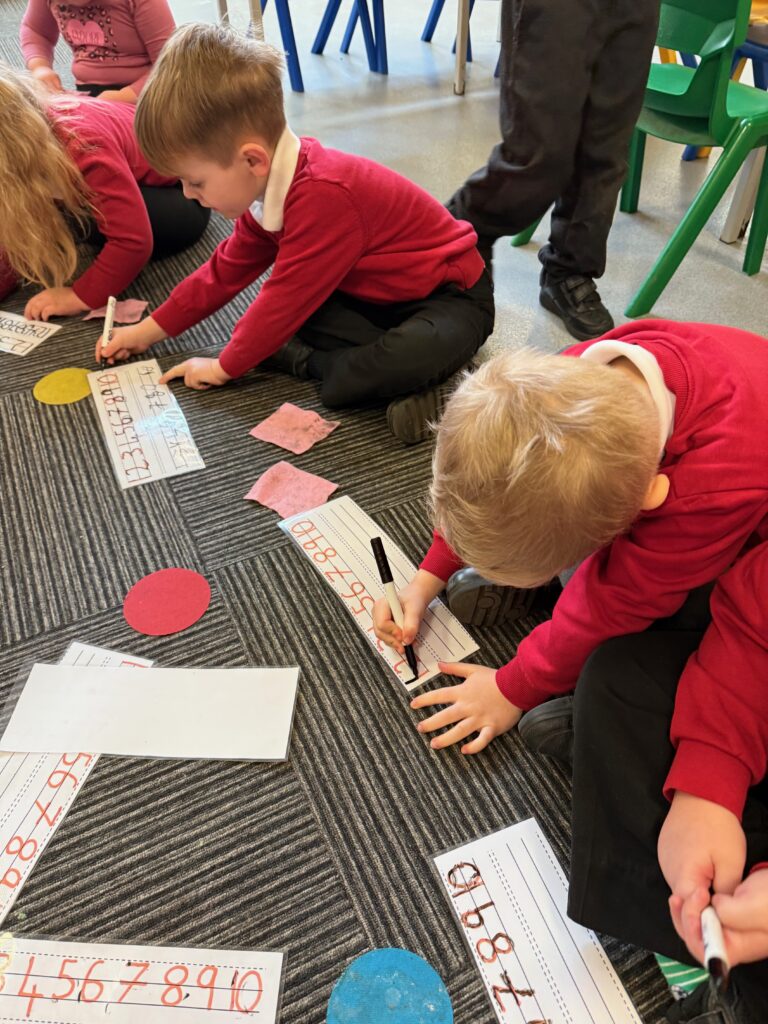


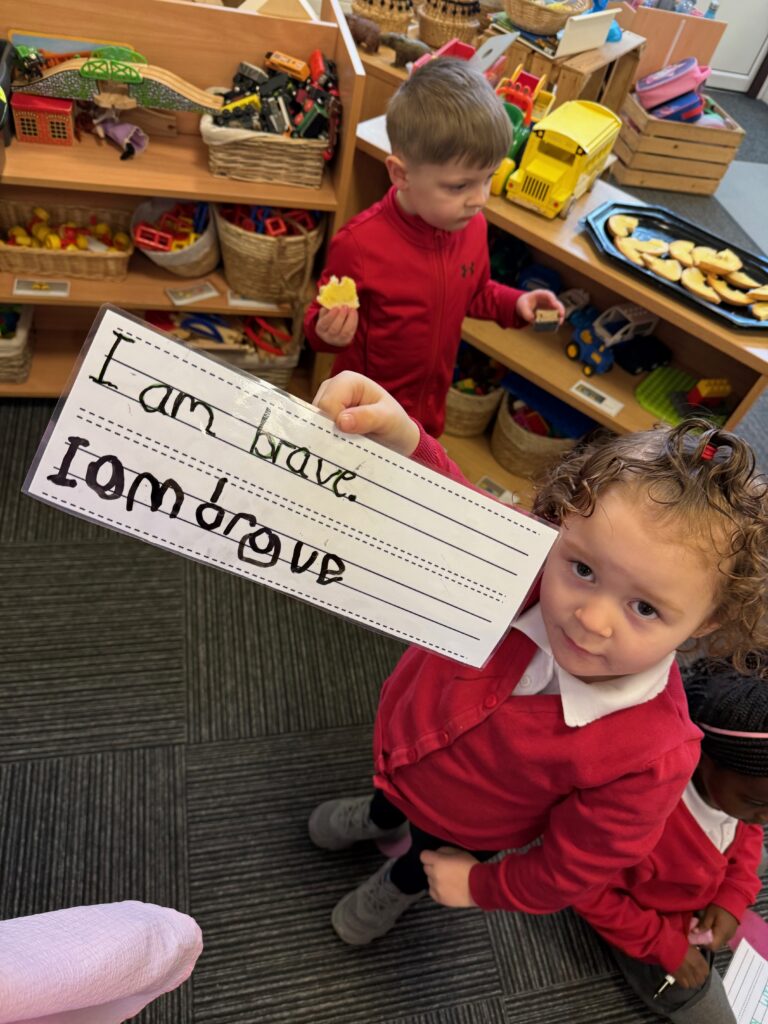
After reading our story ‘Zombies don’t eat veggies’, in writing today a few of us in Crew Marsh spoke about what type of foods would be changed to fit the cuisine of a Zombie. We got so engrossed and came up with lots of great ideas including brain pizza, knees on toast and gut bolognaise! We then put all of our ideas on a slide and presented these ideas in our small group. We are working on orally recalling sentences and the children showcased this amazingly today, by linking their ideas to the story and using the characters names. What a gruesome experience!


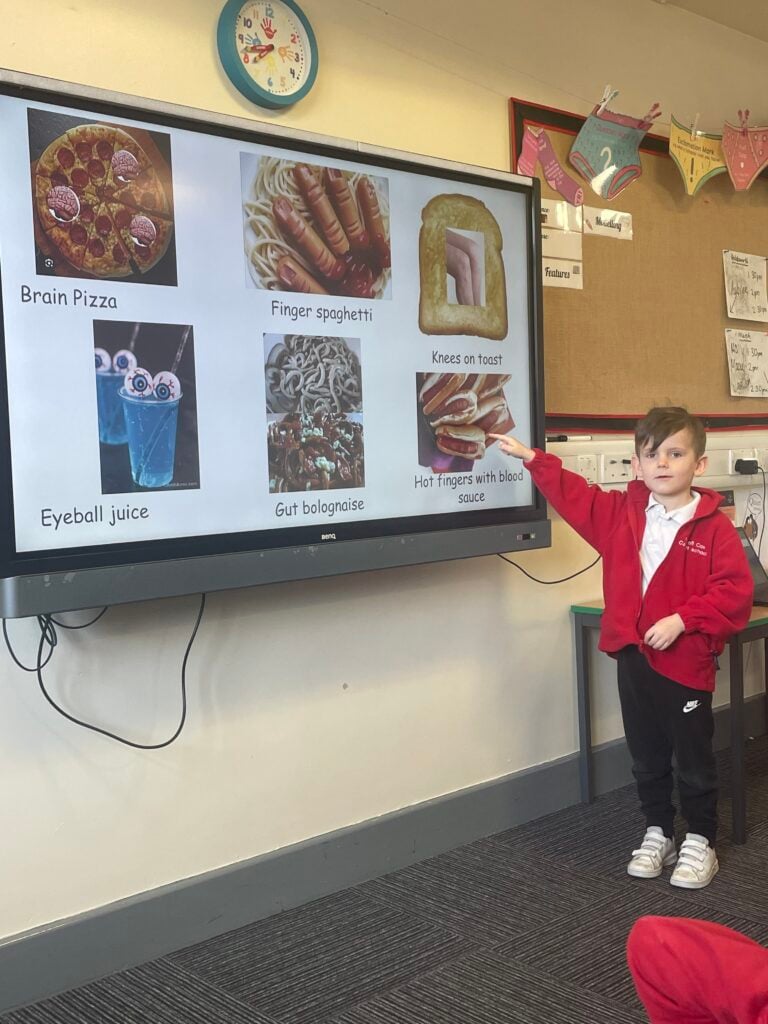




This half term we have begun our next unit of writing, which we’re extremely excited about as it is going to be supporting us with our final product. Our genre is a type of monologue- a speech- focussing on ‘I have a dream for Doncaster’. We were immersed into the writing by watching example videos of monologues in films we love to obviously enjoy as the audience, but importantly build background knowledge and understand a purpose of speeches. We then participated in a conscience alley to reflect on our opinions of the pros and cons of Doncaster, as well as reflected on issues within our own community. We then backed this up with research our chosen dreams for Doncaster.


In grammar day, we consolidated clauses; we found the subject, verb and object within a clause. We also played punctuation bingo, which was a huge hit! This developed our knowledge and led us to today’s learning – Miss’ expectation of us using Y6 standard punctuation. We learnt about the purpose of colons and semicolons and made our very own sentences we could add into our introduction next lesson. The grammar refresh was definitely needed ready for progressing in our writing as well as ready for our grammar test next week.

